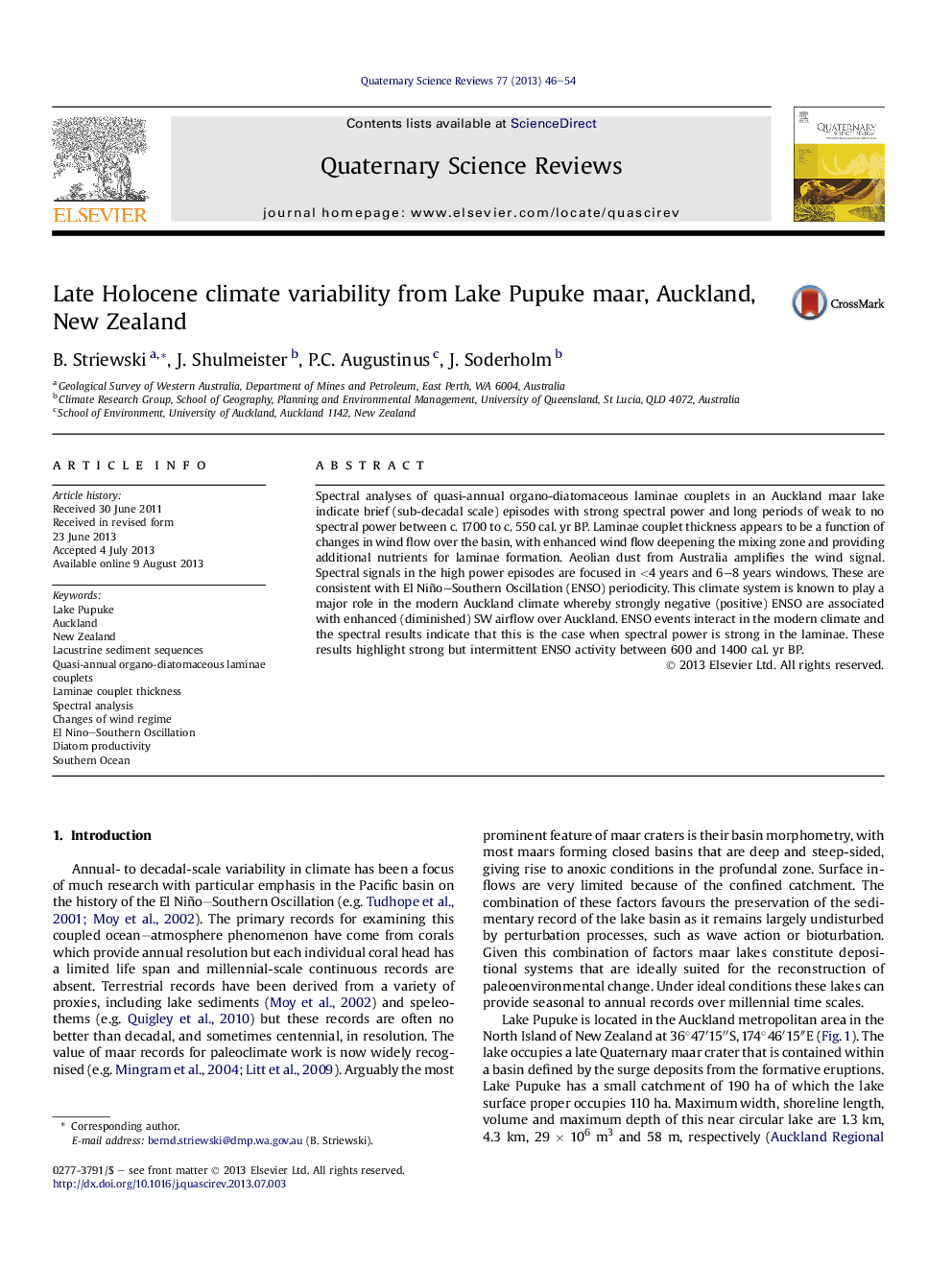| Article ID | Journal | Published Year | Pages | File Type |
|---|---|---|---|---|
| 6446544 | Quaternary Science Reviews | 2013 | 9 Pages |
Abstract
Spectral analyses of quasi-annual organo-diatomaceous laminae couplets in an Auckland maar lake indicate brief (sub-decadal scale) episodes with strong spectral power and long periods of weak to no spectral power between c. 1700 to c. 550Â cal. yr BP. Laminae couplet thickness appears to be a function of changes in wind flow over the basin, with enhanced wind flow deepening the mixing zone and providing additional nutrients for laminae formation. Aeolian dust from Australia amplifies the wind signal. Spectral signals in the high power episodes are focused in <4 years and 6-8 years windows. These are consistent with El Niño-Southern Oscillation (ENSO) periodicity. This climate system is known to play a major role in the modern Auckland climate whereby strongly negative (positive) ENSO are associated with enhanced (diminished) SW airflow over Auckland. ENSO events interact in the modern climate and the spectral results indicate that this is the case when spectral power is strong in the laminae. These results highlight strong but intermittent ENSO activity between 600 and 1400Â cal. yr BP.
Related Topics
Physical Sciences and Engineering
Earth and Planetary Sciences
Geology
Authors
B. Striewski, J. Shulmeister, P.C. Augustinus, J. Soderholm,
